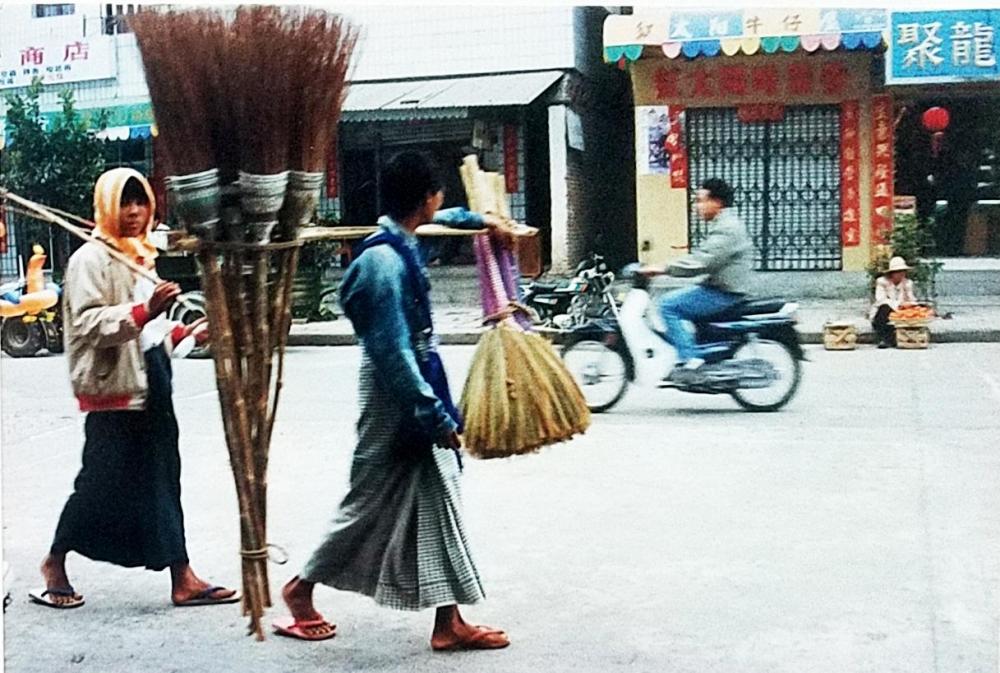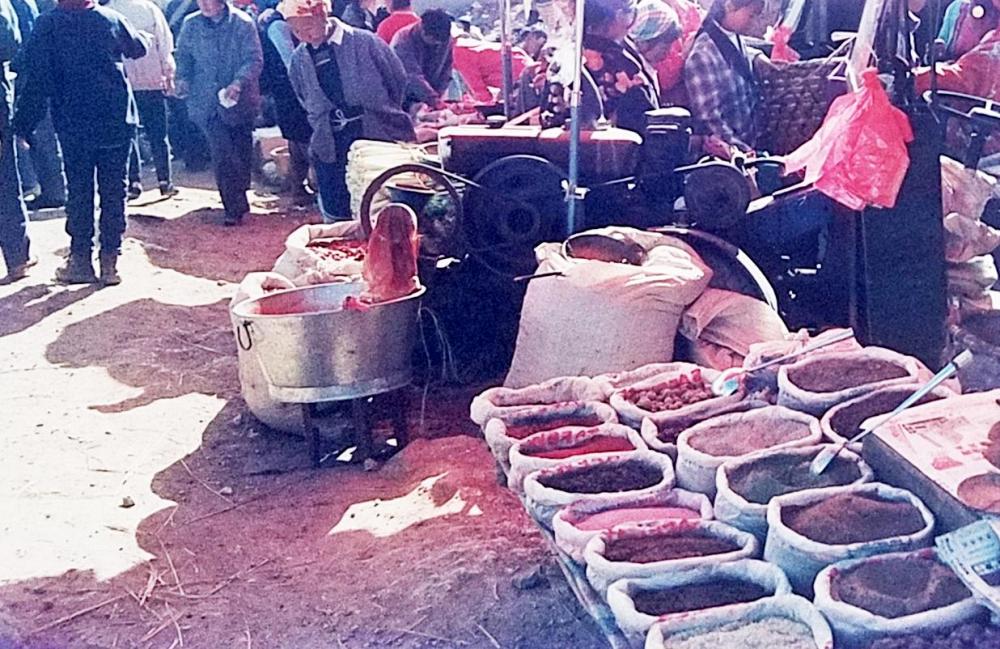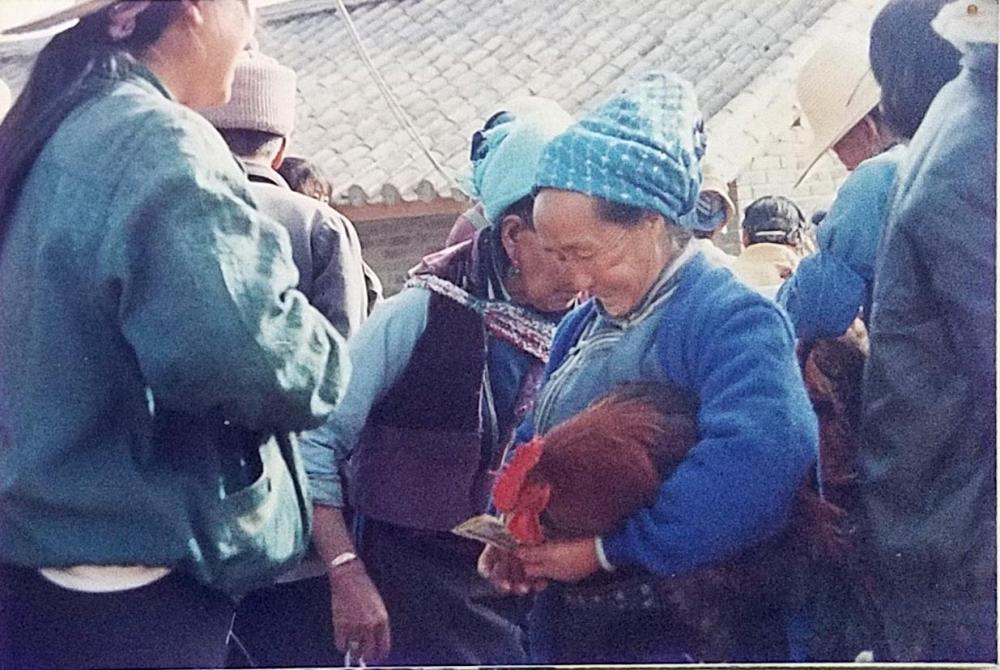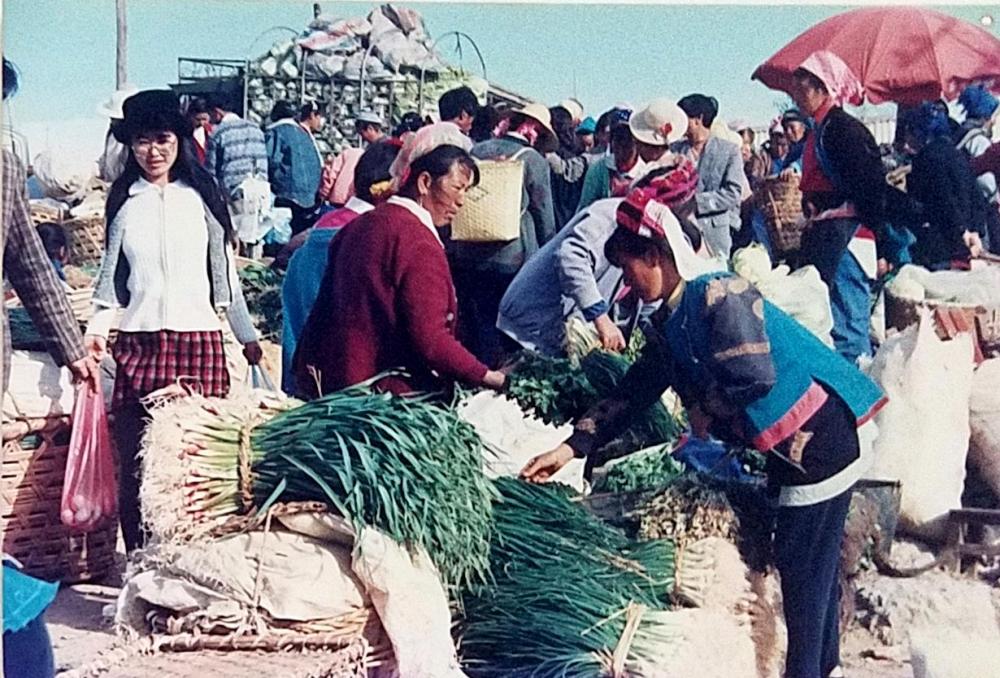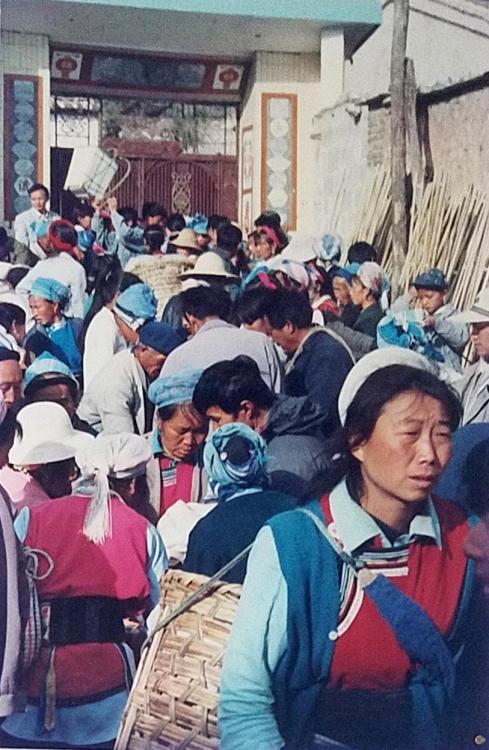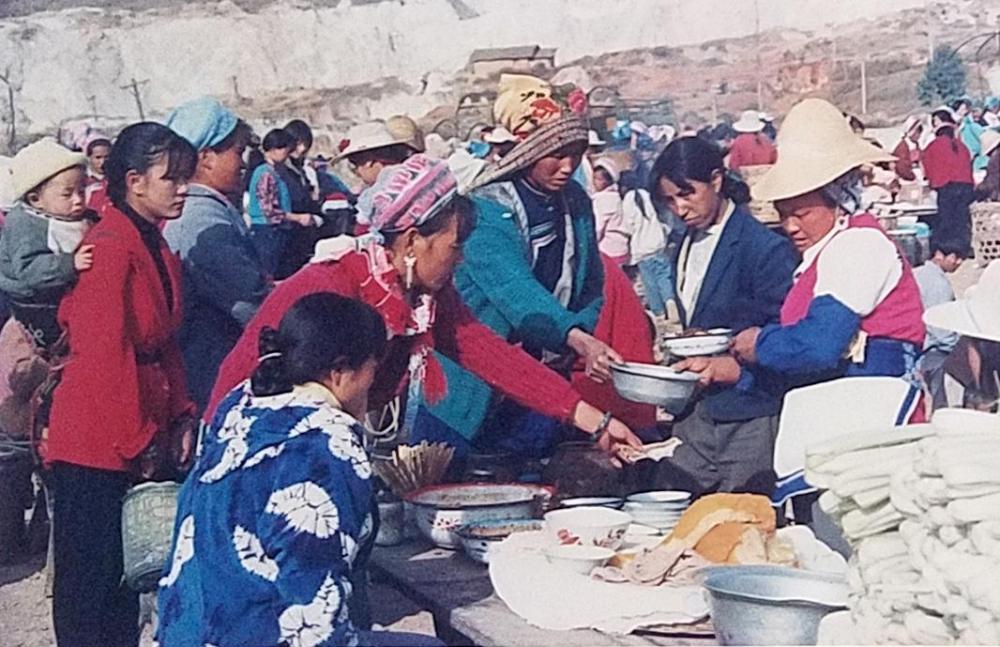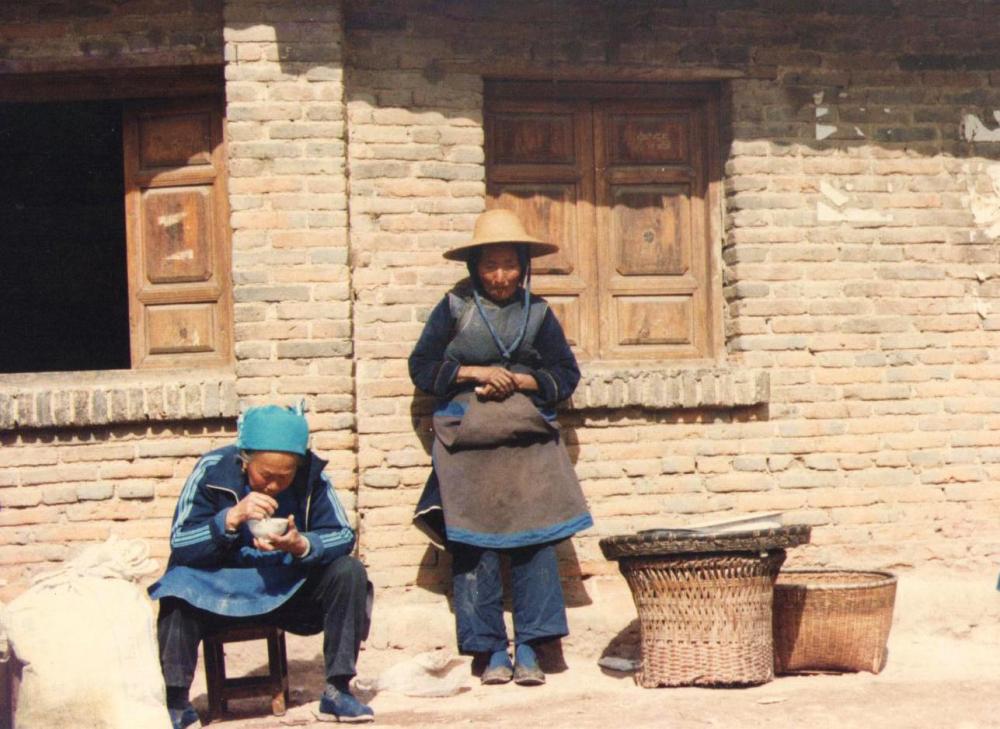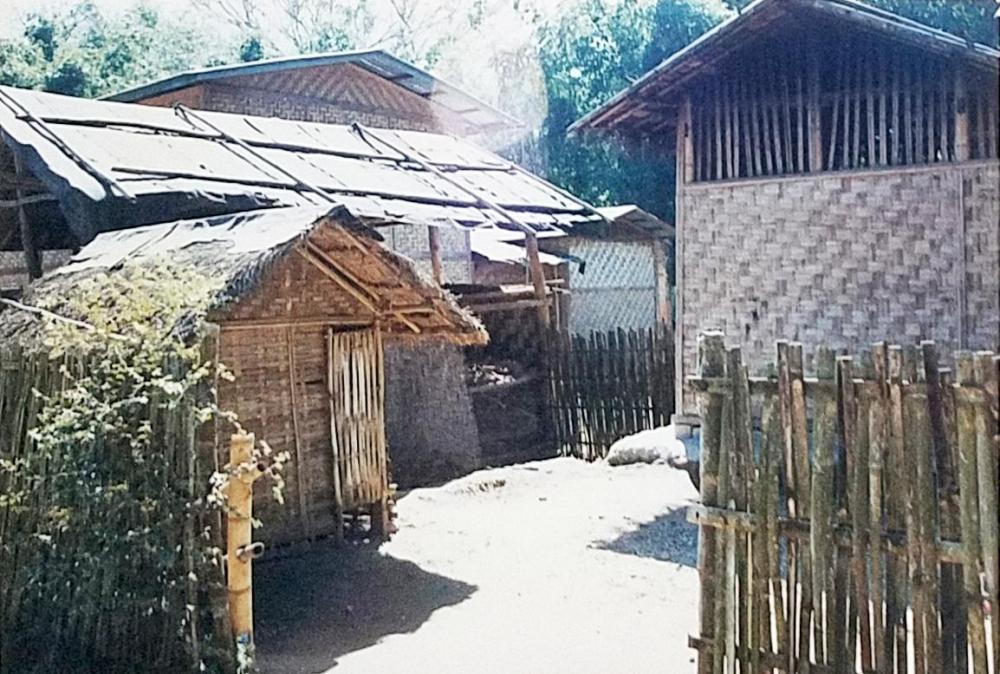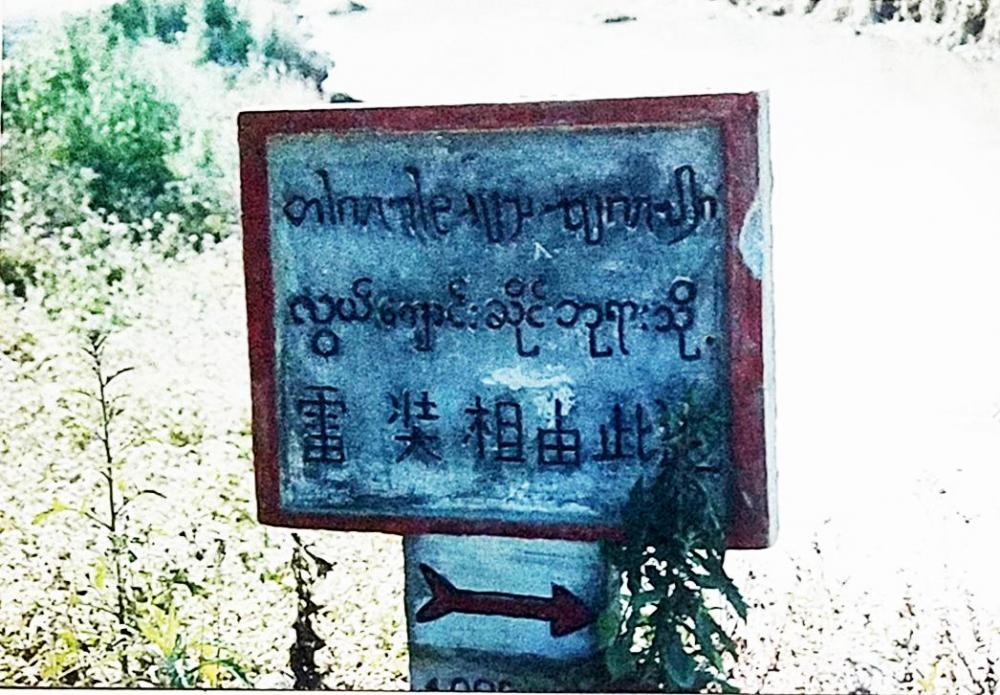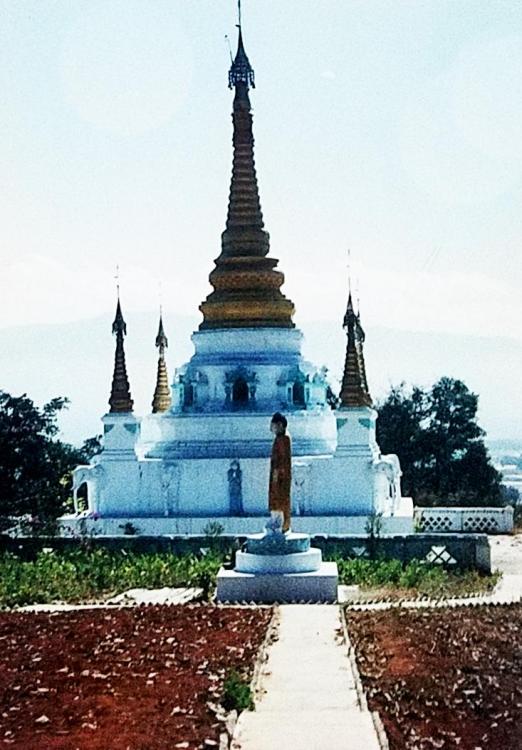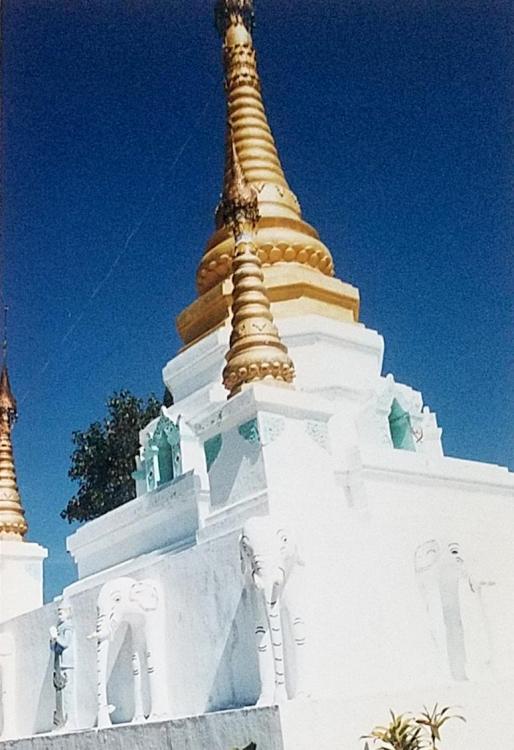I am posting this in connection with the dish mentioned in the Chinese Herbs and Spices topic, where a question arose about the use of mint in Yunnan cuisine. Rather than fully respond there and derail that topic, I thought a new topic would be better.
Yunnan, for those who don’t know, is a province in the south of China. Within China, it borders Tibet, Sichuan, Guizhou and Guangxi provinces. On its southern and western sides, it borders Myanmar/Burma, Laos and Vietnam.
Yunnan's Dai people are ethnolinguistically related to the Thai people and most of them live in the south of Yunnan, mainly in Xishuangbanna Dai Autonomous Prefecture and Dehong Dai and Jingpo Autonomous Prefecture. Xishuangbanna is where that pack of wild elephants which went walkabout come from. They are now safely back home. The area also has wild tigers.
I spent Chinese New Year 1998 in the small city of Ruili in Dehong, right beside the border with Myanmar's troubled Kachin State. Every day local people were wandering back and forward over the border, mostly unchecked. I was unable to use the official crossing, but more on that later. It was a fairly lawless region and many goods (and people) were routinely smuggled in both directions. It is near the notorious 'Golden Triangle' and drugs, particularly heroin, were a major problem, as was prostitution. Yunnan had the highest AIDS infection rate in China.
On the evening of Chinese New Year’s day, I was invited to a celebratory dinner, all of which was Dai cuisine. Not surprisingly, it was highly reminiscent of Thai and other SE Asian cuisines. However, of the many dishes, none included mint, though other herbs mentioned in the video posted here did appear.
Here are a few images of the people, area, and market. Unfortunately, I don't have the photographs of that dinner here. They are back in England. Please remember these images are scans of old pre-digital photographs, so not of the usual quality.
These Burmese boys (yes, boys) have crossed into China hoping to sell their brushes.
The end of that striped field with the tree in the centre marks the border between China and Myanmar's Kachin State. The field is in China; the tree is in Myanmar. As you can see, no border control whatsover.
The Market
Do you want chili or chili with that?
Wow! I got my chicken and change!
Herbery
Dai Houses are made from bamboo and the walls roll up to ventilate the inside as required. I want one!
One day, I went on a long trek trying to find this monastery / temple (雷装相 - léi zhuāng xiāng) I'd read about and got happily but hopelessly lost. At one point I was wandering down this road, no one in sight, when I came across a deserted village. I don't know how I worked it out, but it suddenly came into my head that I had accidentally crossed the border and was in Myanmar. I turned round and ran back to China. Getting caught in Myanmar, without even a passport, never mind a visa would have me shot as a spy!
Back in China, I was standing staring at this sign in three languages, trying to glean any useful information. I knew the bottom language was Chinese, but the other two baffled me. At that time my Chinese reading skills were very limited, so that didn't help either. One of the others is the Dai script, I now know, but can't read. The other possibly Burmese. Don't ask me which is which!
As I stood there being puzzled, I saw this orange-robed, Chinese monk approaching. He stopped and asked me in perfect London-accented English if he could help! I was stunned! He explained that he had studied in London when younger before taking holy orders and entering the very monastery which I was looking for. He escorted me to the temple / monastery chatting all the long way.


